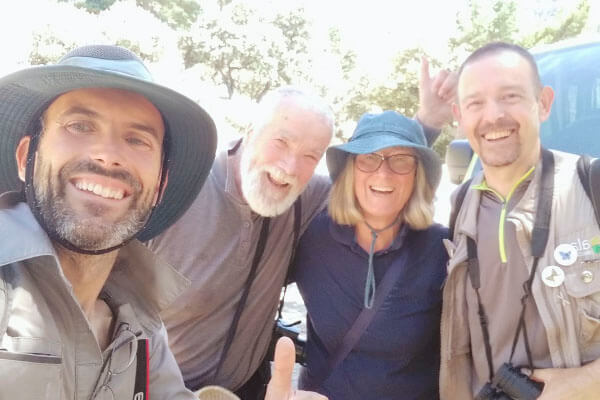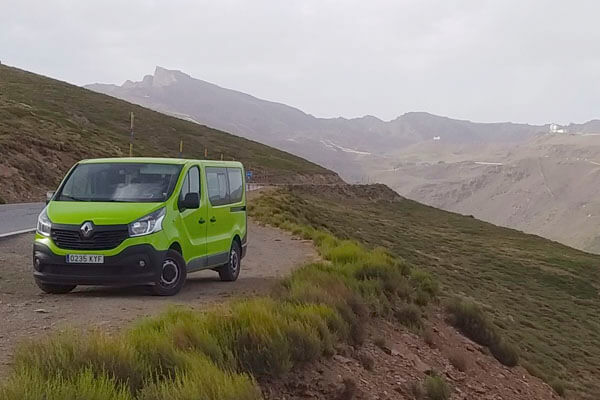The butterflies of Sierra Nevada
The Sierra Nevada is the most striking mountain range in Southern Iberia and includes the largest peaks in the Iberian Peninsula, with several summits reaching over 3300 m (10800 ft) above sea level. It expands along 90 km parallel to the Mediterranean coast line. These mountains presents a notable environmental heterogeneity due to its strong elevational gradient but also due to the West-East gradient, being the Eastern sector the driest.
The higher mountains of Sierra Nevada are themselves a hotspot in which interesting flora and insect endemisms thrive. This can be easily be noticed just by looking at distribution maps of some European butterflies or just by looking at any sort of alpine flora or fauna, a blob usually appears East of Málaga.
It is therefore of great interest from a naturalist’s point of view as some of the landscapes show too little man interaction. Sierra Nevada’s geographical isolation, decent size and altitude make this one of the top butterfly hotspots in Western Europe. Sierra Nevada holds some of the highest protection figure for a natural site in Spain. It was declared a National Park in 1999 and it is still the largest one in the whole Spain.
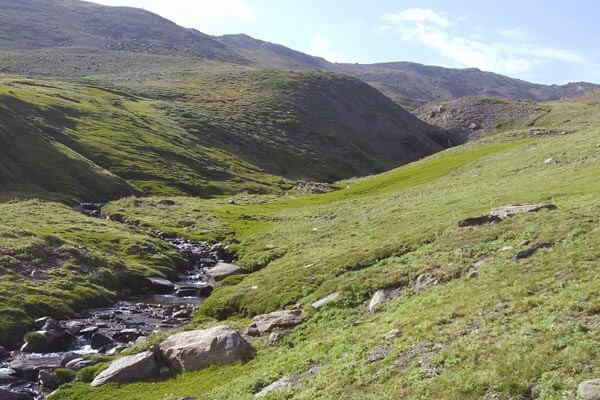
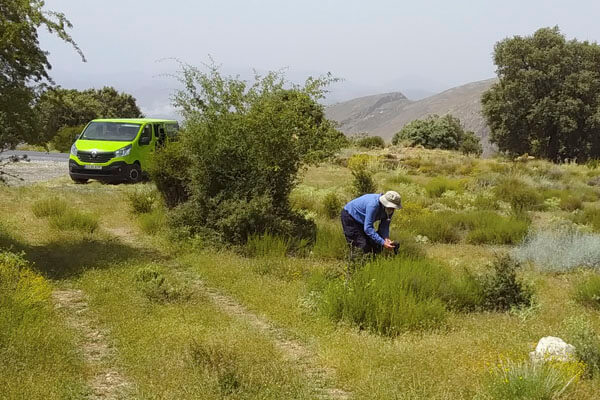
Butterfly species
Sierra Nevada and its immediate surroundings home up to 127 species of butterflies, this is more than the half of the butterflies in the Iberian Peninsula -233 sp-.
There are 3 endemic species to Sierra Nevada: Nevada Blue (below, right), Spanish Brassy Ringlet and Zullich’s Blue (below, left). If we include nearby mountains –locally referred to as sierras- we could also find a fourth endemic, Arethusana boabdil. What is also interesting about these mountains is that about one fifth of the species in Sierra Nevada are Iberian-maghrebi endemics and can’t be found elsewhere in Europe!
The alpine character of the Sierra Nevada is worth mentioning. While walking in the upper mountains one easily notice very tiny gentians, houseleeks and other alpine flora. But perhaps the alpine character of these mountains is well represented by the local endemic nevadensis subspecies of Apollo, showing vivid orange colours in the ocellus. This butterfly in particular is the one I can never miss when visiting the Sierra Nevada. Enjoying the silence of the high mountain interrupted by the fluttering of a nearby flying Apollo is a lovely experience.
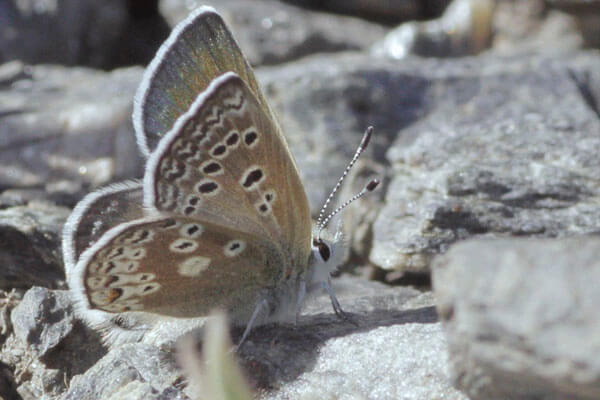
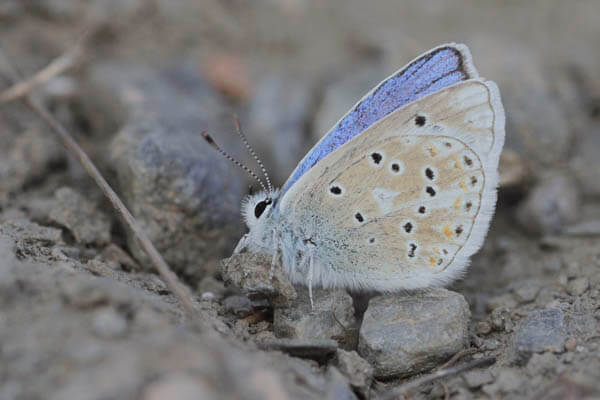
The habitats
I define the high mountain here as those above the tree line, particularly those at higher altitudes than 2800 m (9200 ft). These vast territories remain under the snow several month a year, which conditions the phenology and flight periods of many of the butterflies here. In the high mountain one can find the most peculiar species of the National Park. Zullich’s Blue and Spanish Argus live in scattered small populations where they find their hostplants. Boths species share flight period, habitat and look very much alike. Zullich’s Blue are tackling a big decline due probably to global warming, that leaves the population of this endemic confined to a small number of pockets. Spanish Argus are a bit easier to find than Zullich’s, as their hostplants (a pinkish stork’s–bill) are in full flower and are easily noticed when walking along trails. They are very loyal to these, and watching these tiny butterflies flying low among the flowers is a real delight. Nevada Blues, however, can be found not just here but also at altitudes as low as 2200 m. Nevada Grayling, however, is a very scarce and highly localized species that shows a disjoint distribution. Sometimes searching for it in the Urals or Mongolia could be more productive! Both migrating and travelling butterflies may also be seen here. A visiting naturalist can find Small Tortoiseshells at the highest peaks even in a sunny day in the middle of the winter!
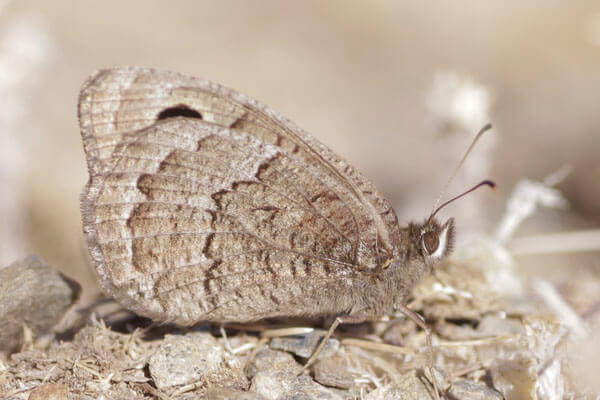
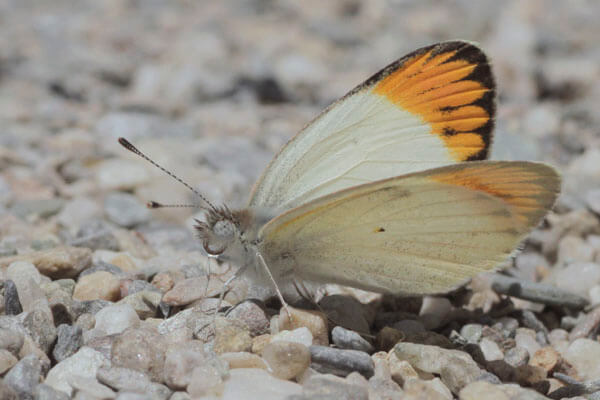
The last ice ages shaped the higher Sierra Nevada in a way that high mountain lagoons and vernal streams are common. Among these, the lagoons below 2700 m (9000 ft) are particularly rich in butterflies as they are surrounded by grassy meadows. Here Dark Green and Meadow Fritillaries can be locally common. These remote lagoons are also attended by Olive Skippers, Safflower Skippers, Heath Fritillaries, Purple-shot Coppers, Mazarine Blues and Idas Blues.
The diverse native forests also hold a rich array of butterflies. Pyrenean and Holm Oaks make up small forests with clearings in between. Here species like Iberian Marbled White, Purple Hairstreak, False-ilex Hairstreak, Ilex Hairstreak, Sage Skipper, Southern Marbled Skipper, Moroccan Orange Tip, Green-veined White, Comma and Spanish Festoon can be common. Fritillaries are also well represented in some years here, with species such as Cardinal, High Brown, Marsh and Lesser Spotted. More generalistic species such as Oriental and Dusky Meadow Browns also visit regularly these forests. To find the endemic Arethusana boabdil one must search specifically at cleared pine forest on limestone soils in August. This beautiful brown butterfly happens to fly a few weeks after the Apollos and other key species, hence it is usually missed by most of the lepidopterists visiting the region.
The higher scrubland – the one above 1800 m (6000 ft) – is a mixture of different junipers, gorses and grasses. Key butterfly species live in this habitat. A stroll in summer here can produce specie such as Niobe Fritillary, Spanish Brassy Ringlet, Western Marbled White, Black Satyr, Rock to name just a few! Both Silver-studded and Idas Blues are very similar looking species that share flight periods and drinking spots here. Common Blues fly here but at lower altitudes the very similar Southern Blues replace them.
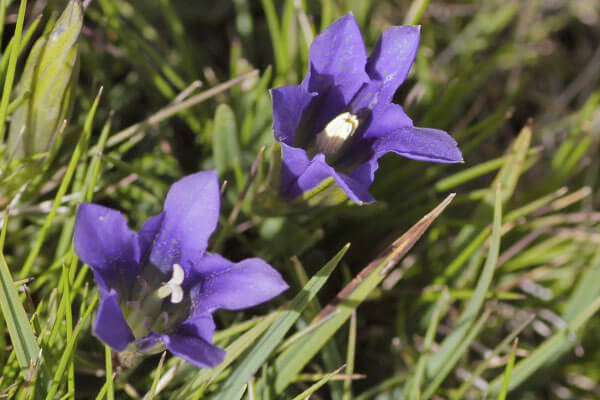
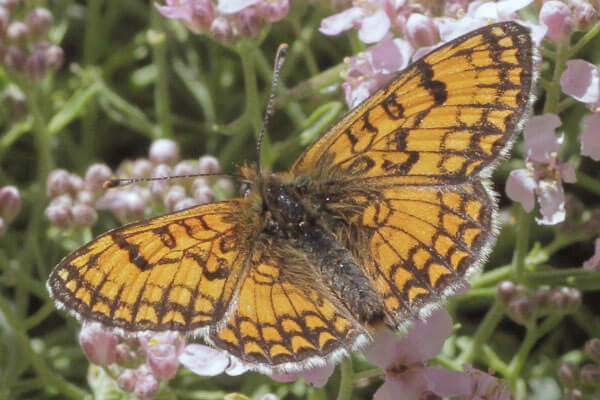
The lower scrubland is a more diverse habitat where pastures, Hawthorns and orchards hold a likewise rich butterfly community. The numbers of Black-veined Whites, Cleopatras, Southern Scarce Swallowtails and Clouded Yellows can be notorious in some years. Other species that can be found here include Blue-spot Hairstreak, Great Banded Grayling, Dusky Heath and Berger’s Clouded Yellow. I very much enjoy what the 1700 m (5600 ft) level can bring. I usually find the highest lists at this elevatioin, and iconic species such as the Hermit or Mother-of-Pearl Blue will certainly add some joy to the visitor.
Pine forests in several species were massively reforested in the 60’s. These hold generalistic species such as Wall Brown, Speckled Wood, Queen-of-Spain Fritillary and Spanish Gatekeeper. This did also have a negative impact in the habitat of two very scarce and localized species here, the Moorish Iolas and Rambur’s Blue.
All across the altitude range of Sierra Nevada a number of fast-flowing streams and canals (some of them built by the Romans!) provide habitat to Spanish Purple Hairstreaks and Green-veined Whites. It is a joy to walk along these, which usually produce many species attracted by the freshness and the mud. I was first introduced to these canals by my friend Miguel Olvera, and till now I have never seen so many Rock and Great Banded Graylings flying together!
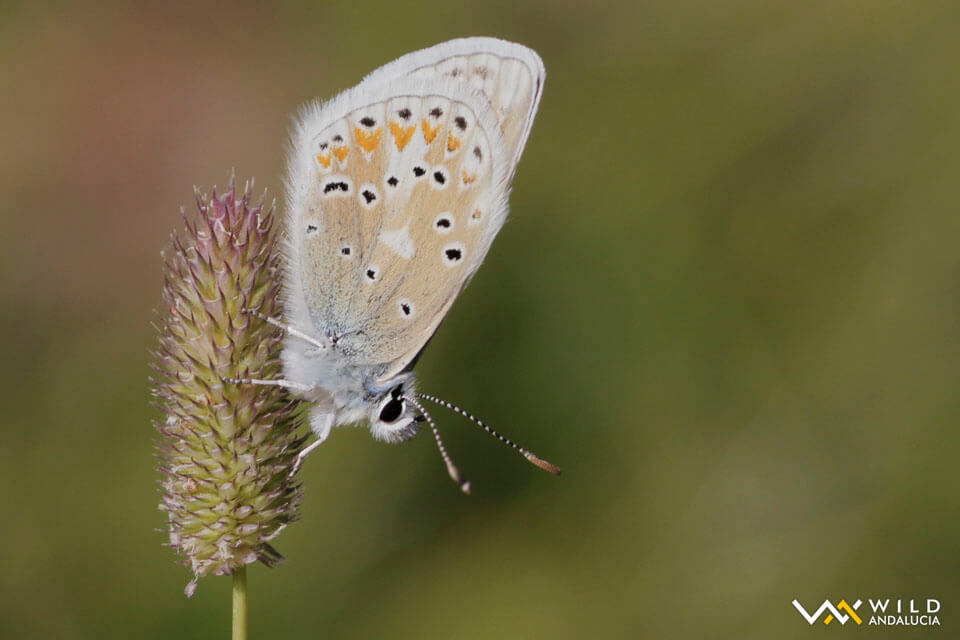
Tips for exploring Sierra Nevada
Early and mid July overall bring the core of the Sierra Nevada’s iconic butterflies on the wing and hence a visit at this specific time of the year is highly recommended. Butterfliers should notice this is also the hottest period of time in the year and it is always necessary to carry enough water to drink, a good hat and sunscreen.
I recommend to spend at least 4 or 5 days to cover all the above mentioned habitats and to compensate any potential weather issue. Attention should be paid to weather conditions. Strong winds are sometimes unpredictable in high mountain, which could ruin your plans to get Apollos in one specific day if you have a tight agenda!
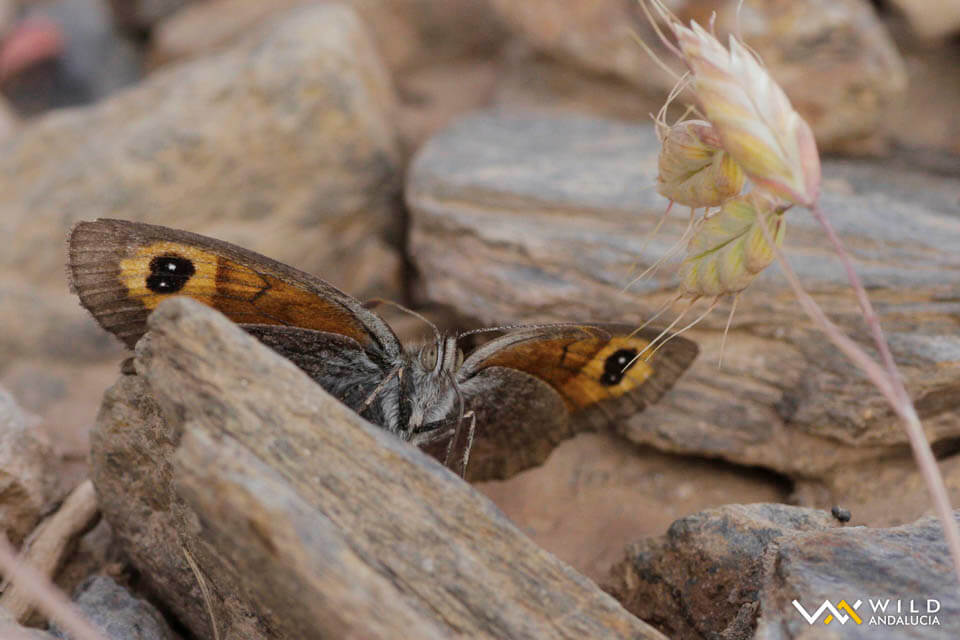
A good base from where to explore the region is Granada city, which has a strong moorish-age legacy. I particularly find more convenient to be based in either Monachil or Pinos Genil, as it reduces the driving times a little bit. The small and isolated white-hill villages in the Southern slopes of the massif are konwn as the Alpujarras. These are perfect bases if one aims to relax in the nature. It is also here that a small colony of Andalusian Anomalous Blues was discovered about a dozen years ago.
There is a fantastic book to the butterflies of Sierra Nevada written by my friends Javier Olivares and José Miguel Barea. Although just a limited number of prints were produced, it can be downloaded in pdf files –in Spanish- just by searching online: Mariposas diurnas de Sierra Nevada.
Our 7 or 8 day tours there usually produce 75+ spcies, with 26 species as the daily average and 42 species as a typical day maximum. This represents a quite successful total number of species, but it is also the stunning scenery, delightful local gastronomy, the rich history and the charming people that make a butterfly tour to the Spanish Sierra Nevada a great experience in many senses.
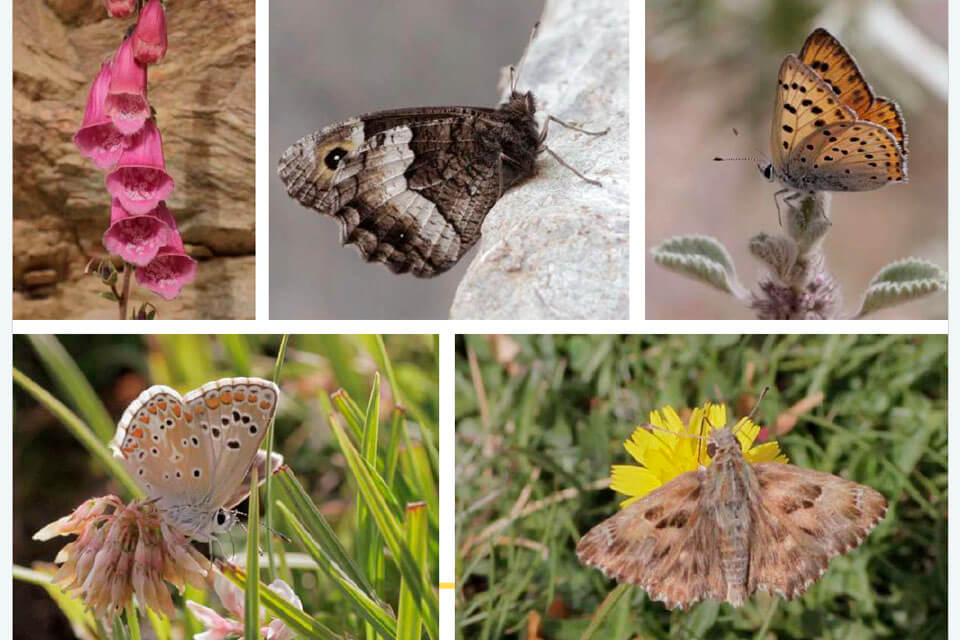
Explore Sierra Nevada with a butterfly guide
Those interested in the regional endemics of Sierra Nevada, we highly recommend joining the Sierra Nevada butterfly tour.
